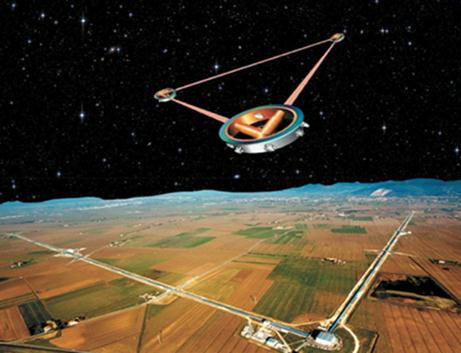In Albert Einstein's theory of general relativity, space-time becomes dynamic and deformable like the material objects it contains. The theory also reveals the gravity of the geometric properties of space-time.
One of the most important predictions of General Relativity theory is existance of gravitational waves (GWs) travelling with the speed of light. GWs weakly interact with matter (due to weakness of the gravitational coupling constants "G") which imples that the information stored in GW propagates to us without distortion. This also implies that it is very hard to detect GWs, we use a large scale (several kilometers) "L"-shape laser interferometers to detect the tidal-type force exerted by a passing gravitational wave.
The Gravitation Team of the APC is involved in the development and exploitation of both ground-based observatories with advanced Virgo, and the space-based observatory LISA. The team develops a wide range of activities going from instrument science (R&D, instrument design and simulation, commissioning), data analysis (methods, software implementation) and astrophysics (source physics, models, multi-messenger astronomy in connection to high-energy or neutrino astronomy).
The team participates to the development of future detector generation (Einstein Telescope), and contributes to the gravitational-wave science using other windows, specifically pulsar timing array with the EPTA and IPTA.
The Gravitation Team
- BABAK Stanislas (responsible)
- CHASSANDE-MOTTIN Eric (deputy responsible)
- List of members of the Gravitation group
Contact:
For more information, see the lab's activity report (2017-2021)

